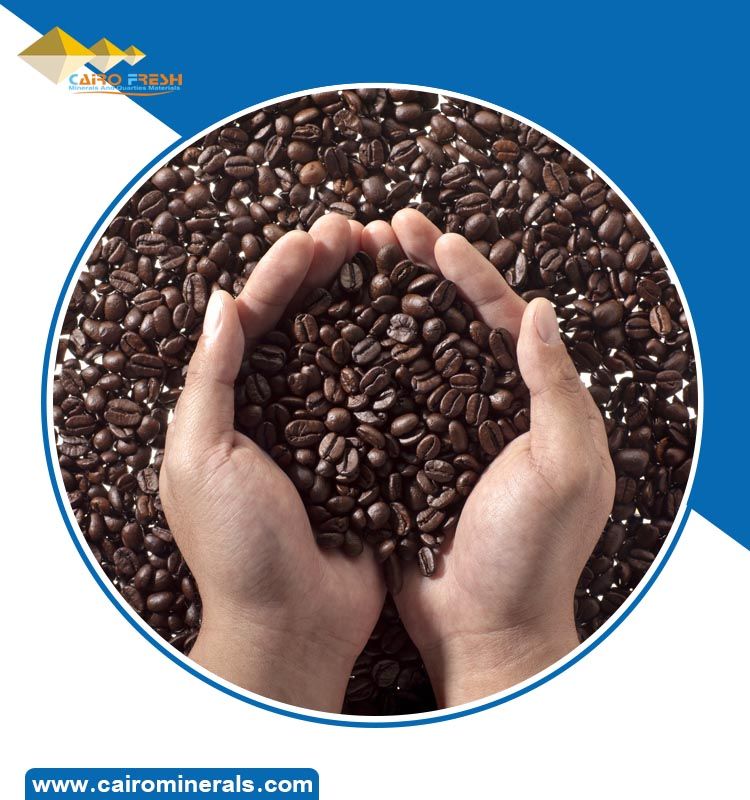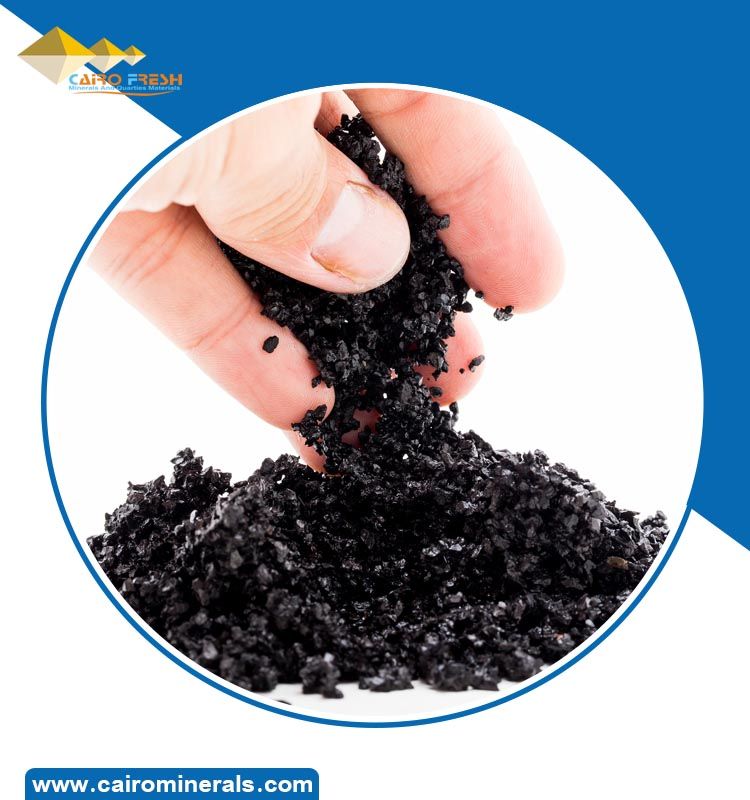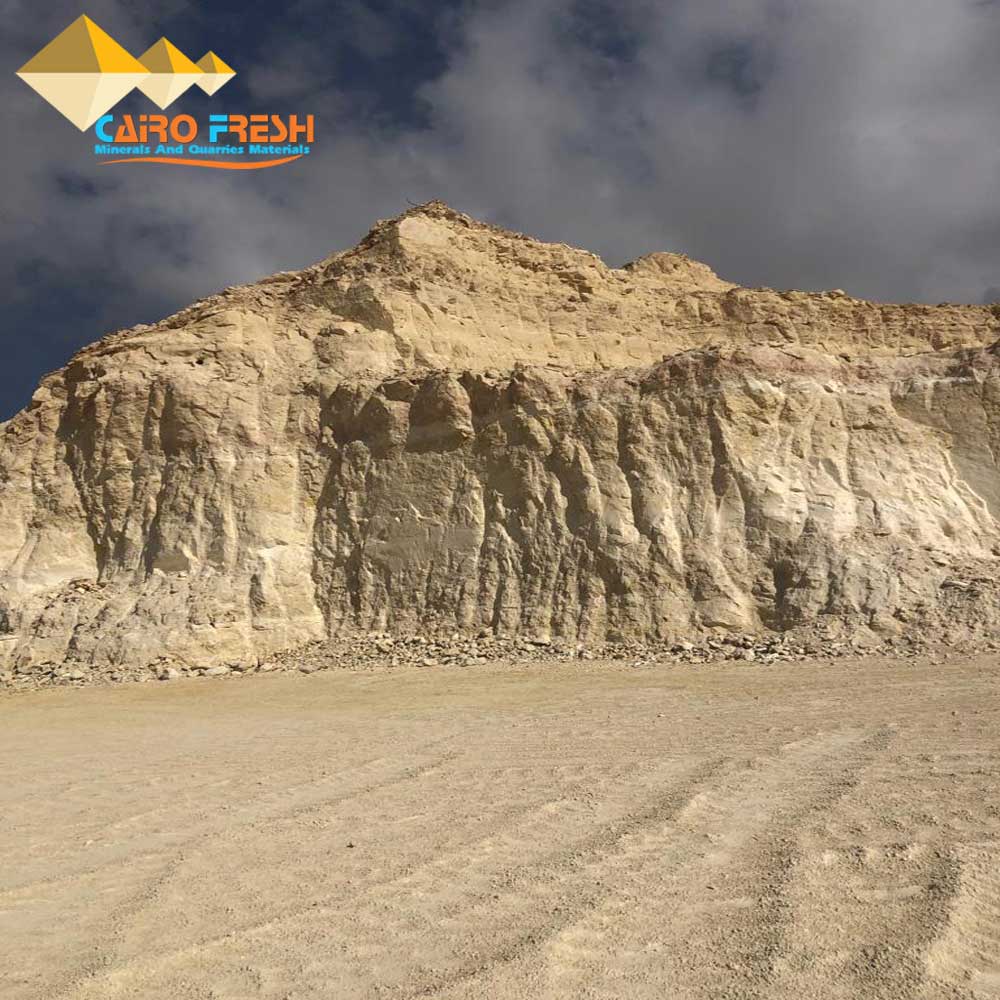Activated Carbon Which Used Water Filtration

Activated carbon used for water filtration is made from the world’s superior anthracite. In fact, it is the only type of activated carbon that meets the highest industry standards and consistently delivers superior quality across all of our formulations. furthermore We use a proprietary process to activate our carbon, which results in a product that is highly porous and has a large surface area. Consequently, our products are efficient in the removal of impurities such as chlorine, heavy metals, and organic compounds from water
moreover Our activated carbon is also environmentally friendly. additionally It is made from renewable resources and is easily recycled. As a result, it is a sustainable choice for water filtration.
however If you are looking for a high-quality activated carbon for water filtration, then look no further than our products. We are confident that you will be satisfied with our products and our commitment to quality.
Furthermore, we design customized products to cater to the individual demands of our clients. Moreover, our products have found extensive use in diverse industries ranging from water purification, wastewater disposal to air purification. Consequently, our products have gained a reputation for being a top choice among industries seeking high-performing and reliable filtration solutions.
What is Activated Carbon?
Activated Carbon for water filtration stands out as an exceptional product, which boasts outstanding quality. To begin with, it possesses several remarkable features that make it highly beneficial to various industries. Additionally, it is environmentally friendly and easy to recycle, thereby gaining recognition for its exceptional performance. To begin with, they identify the specific needs of their clients through a thorough needs assessment process, and then they deliberately tailor their products to meet those requirements. By doing so, the customers can receive precisely what they need while remaining within their planned budgetary targets.
Consequently, the customers are not only satisfied, but they also receive precisely what they need while remaining within their budgetary targets.. Furthermore, they continuously invest in research and development to enhance the efficiency and effectiveness of their products. What’s more, their team of experts is dedicated to providing prompt and reliable customer support, thereby ensuring that customer needs are met with utmost care and attention.
The company appreciates the support of their customers and encourages them to share their positive experiences with others. Overall, Activated Carbon for water filtration is an exceptional product that possesses outstanding features, environmental benefits, and a dedicated team to provide excellent customer service.

The specification is as follows:
Coconut shell activated carbon
Size 12-40 mesh
Certificate No: | KCPL-SWFWTAET/13/12/23/01 | Date: | 13/12/2023 |
Name of the Customer | Cairo Fresh Export, Import and Quarries Exploit | ||
Product Name | Granular Activated Carbon | Grade: | 1050 IV, size A (12*40 mesh) |
Type of Precursor | Coconut Shell Based | Packing size (kg) | 25kg bags with pallets |
Manufacturing Process | Steam Activation | Manufacturing Date: | 21/10/2023 |
Date of Expiry | 5 years from date of manufacturing if stored as per MSDS guidelines | ||
Specifications: | Actual Value | ||
1 | Iodine value, mg/g | 1070 | |
2 | Bet surface area, m2/g | 1050 | |
3 | Moisture, % (as packed) | 3.0 | |
4 | Ash content, % (as soluble) | 2.5 | |
5 | Apparent Density, kg/m3 | 530 | |
6 | PH | 10.5 | |
7 | Particle size, mesh | 12*40 | |
Size 30-60 mesh
Certificate No: | KCPL-SWFWTAET/13/12/23/02 | Date: | 13/12/2023 |
Name of the Customer | Cairo Fresh Export, Import and Quarries Exploit | ||
Product Name | Granular Activated Carbon | Grade: | 1050 IV, size B (30*60 mesh) |
Type of Precursor | Coconut Shell Based | Packing size (kg) | 25kg bags with pallets |
Manufacturing Process | Steam Activation | Manufacturing Date: | 23/10/2023 |
Date of Expiry | 5 years from date of manufacturing if stored as per MSDS guidelines | ||
Specifications: | Actual Value | ||
1 | Iodine value, mg/g | 1072 | |
2 | Bet surface area, m2/g | 1050 | |
3 | Moisture, % (as packed) | 3.1 | |
4 | Ash content, % (as soluble) | 2.5 | |
5 | Apparent Density, kg/m3 | 530 | |
6 | PH | 10.5 | |
7 | Particle size, mesh | 30*60 | |
Size 50-100 mesh
Certificate No: | KCPL-SWFWTAET/13/12/23/03 | Date: | 13/12/2023 |
Name of the Customer | Cairo Fresh Export, Import and Quarries Exploit | ||
Product Name | Granular Activated Carbon | Grade: | 1050 IV, size C (50*100 mesh) |
Type of Precursor | Coconut Shell Based | Packing size (kg) | 25kg bags with pallets |
Manufacturing Process | Steam Activation | Manufacturing Date: | 29/10/2023 |
Date of Expiry | 5 years from date of manufacturing if stored as per MSDS guidelines | ||
Specifications: | Actual Value | ||
1 | Iodine value, mg/g | 1072 | |
2 | Bet surface area, m2/g | 1050 | |
3 | Moisture, % (as packed) | 3.1 | |
4 | Ash content, % (as soluble) | 2.4 | |
5 | Apparent Density, kg/m3 | 530 | |
6 | PH | 10.4 | |
7 | Particle size, mesh | 50*100 | |
Coal-based activated carbon for air purification
For air purification, air absorption, poison defense, protection, etc.
Particle Size ( MM ) | Hardness ( % ) | Bulk density ( G/L ) | CTC ( % ) | Ash ( % ) | Moisture ( % ) | PH | |
| XJJ-09 | ¢0.9 | ≥90 | 400-500 | 35-70 | 5-15 | ≤5 | 9-11 |
| XJJ -10 | ¢1.0 | ||||||
| XJJ -15 | ¢1.5 | ||||||
| XJJ -20 | ¢2.0 | ||||||
| XJJ -30 | ¢3.0 | 400-480 | |||||
| XJJ -40 | ¢4.0 | ||||||
| XJJ -50 | ¢5.0 | ||||||
| XJJ -60 | ¢6.0 | ||||||
| XJJ -70 | ¢7.0 | ||||||
| XJJ -80 | ¢8.0 |
Due to its strong adsorptive and dead sorptive power, coal-based activated carbon is a highly sought-after alternative for solvent recycling. Many manufacturers in various industries incorporate it as a fundamental component in their production processes. For instance, silica sand finds wide usage in film and Platonized sheet production, printing, and dyeing operations. Similarly, the automotive industry relies heavily on this component. Beyond these industries, it is also a common raw material in the synthetic resin industry as well as the synthetic fiber industry.
Size ( MM ) | Hardness ( % ) | Bulk density ( G/L ) | CTC ( % ) | Ash ( % ) | Moisture ( % ) | PH | |
| XJJ -30/70.12 | ¢3.0 | ≥90 | ≥420 | ≥70 | ≤12 | ≤3 | 9-11 |
| XJJ -40/70.12 | ¢4.0 | ||||||
| XJJ -20/80.12 | ¢2.0 | ≥400 | ≥80 | ≤5 | |||
| XJJ -40/80.12 | ¢4.0 |
Coal-based activated carbon for water purification
Activated Carbon is used for deep purification of drinking water, industrial drain water, and further disposal of wastewater.
Mesh | Hardness ( % ) | Bulk density (G/L) | Iodine (MG/G) | Ash (%) | Moisture (%) | PH | |
| XJJ -830/950.6 | 8×30 | ≥90 | ≥510 | ≥950 | ≤6 | ≤3 | 9-11 |
| XJJ -1240/1000.8 | 12×40 | ≥1000 | ≤8 | ||||
| XJJ-2050/1050.12 | 20×50 | ≥1050 | ≤12 | ||||
| XJJ -1240、950.4 | 12×14 | ≥950 | ≤4 | ≤5 | 5-8 | ||
| XJJ -830/1000.12 | 8×30 | ≥450 | ≥1000 | ≤12 | ≤3 | 9-11 | |
| XJJ -15/950.10 | ¢1.5mm | ≥95 | ≥500 | ≥950 | ≤10 | ||
| XJJ -200/900.12 | 200 | ≥900 | ≤12 | ≤8 | |||
| XJJ -100/1000.15 | 100 | ≥1000 | ≤15 | ≤12 |
Coal-based activated carbon for desulphurization
For flue desulphurization of the chemical industry, heating power, petrochemical, chemical fiber, etc.
| Size | Hardness | Sulphur capacity | Bulk density | Ash | Moisture | |
| XJJ -30/850.15 | ¢3.0 | ≥90 | ≥850 | 450-510 | ≤15 | ≤3 |
| XJJ -40/850.16 | ¢4.0 | |||||
| XJJ -80/850.16 | ¢8.0 | 400-450 | ≤16 |
Activated carbon for decolorization
It is used for decolorization in liquid.
| Size | Hardness | Bulk density | Methylene ( MG/M1 ) | Ash | Moisture | PH | |
| XJJ -830/220.12 | 8×30 | ≥90 | ≥420 | ≥220 | ≤12 | ≤3 | 9-11 |
| XJJ -1240/250.8 | 12×40 | ≥350 | ≥250 | ≤8 | ≤5 | 5-8 | |
| XJJ -2448/180.4 | 24×48 | ≥85 | ≥380 | ≥180 | ≤4 | 9-11 | |
| XJJ -200/220.15 | 200mesh | ≥220 | ≤15 | ≤8 | |||
| XJJ -200/180.15 | ≥180 |
Due to its high absorption rate, coal activated carbon is a versatile substance that can be used in various situations that require superior absorption. Whether it’s for purifying water or eliminating odors, this substance is highly effective. Moreover, because of its adaptability, it can be employed in a range of applications, from industrial processes to everyday consumer products. Generally speaking, it is an incredibly useful material.
| Size | Hardness | Bulk density | Iodine | CTC | Ash | Moisture | PH | |
| XJJ -40/90.12 | ¢40 | ≥88 | 380-420 | ≥90 | ≤12 | ≤5 | 9-11 | |
| XJJ -40/100.16 | 370-410 | ≥100 | ≤16 | |||||
| XJJ -40/110.18 | 360-400 | ≥110 | ≤18 | |||||
| XJJ -40/120.18 | 350-380 | ≥120 | ||||||
| XJJ -510 | 5×10 | ≥90 | 350-400 | 1000-1250 | 8-14 | |||
| XJJ -830 | 8×13 | |||||||
| XJJ -1240 | 12×40 |
Antiultraviolet and aging resistance flexible freight bags-FIBC is adapted.
Two types of 25KG and 500KG.
Ultimate Guide to Activated Carbon for Water Filtration: Benefits, Applications, and Specifications
Welcome to Cairo Minerals, a global leader in providing high-quality activated carbon solutions for water filtration. Our activated carbon products are designed to meet the highest standards of water purification, ensuring cleaner, safer, and better-tasting water for various applications. This comprehensive guide dives into the science, benefits, and applications of activated carbon, helping you make the most informed decision for your water treatment needs.
What is Activated Carbon?
Activated carbon is a processed form of carbon with an exceptionally high surface area and microporosity. These features make it an ideal material for adsorbing contaminants, impurities, and unwanted compounds from water. Derived from natural sources like coconut shells, coal, and wood, activated carbon has become indispensable in industries ranging from residential water filtration to large-scale industrial processes.
Benefits of Using Activated Carbon in Water Filtration
Exceptional Adsorption Properties
- Activated carbon has a vast internal surface area, making it highly effective at adsorbing a wide range of contaminants, including:
- Chlorine and chloramines.
- Volatile Organic Compounds (VOCs).
- Pesticides and herbicides.
- Heavy metals like lead and mercury.
- Organic compounds causing unpleasant tastes and odors.
Improves Taste and Odor
- By removing chlorine, sulfur compounds, and other taste-altering contaminants, activated carbon enhances the sensory quality of water, making it more pleasant to drink.
Eco-Friendly and Sustainable
- Coconut shell-based activated carbon is a renewable resource, offering an environmentally friendly solution for water filtration.
Customizable for Diverse Applications
- Available in granular, powdered, and block forms, activated carbon can be tailored to suit various water treatment systems, including domestic filters, industrial plants, and municipal systems.
Cost-Effective Solution
- With its high efficiency and durability, activated carbon minimizes replacement frequency, making it an economical choice for long-term use.
Key Applications of Activated Carbon in Water Filtration
Residential Water Filtration
Activated carbon is widely used in home water filtration systems to ensure clean and safe drinking water. Applications include:
- Faucet-mounted filters.
- Refrigerator water filters.
- Whole-house water treatment systems.
- Portable water purification devices for travelers and outdoor enthusiasts.
Industrial Water Treatment
Industries rely on activated carbon to treat process water, cooling tower water, and effluents. Its applications include:
- Removing organic contaminants, heavy metals, and oil residues.
- Ensuring water quality for use in food and beverage manufacturing.
- Pre-treatment for advanced systems like reverse osmosis.
Municipal Water Treatment
In large-scale municipal systems, activated carbon is used to:
- Eliminate chlorine and chloramines.
- Remove taste- and odor-causing compounds.
- Treat wastewater for safe discharge into natural water bodies.
Aquariums and Aquatic Systems
Activated carbon ensures optimal water quality for aquatic life by:
- Removing toxins and organic waste.
- Maintaining water clarity and reducing odors.
Wastewater Treatment
Activated carbon adsorbs harmful contaminants, enabling the reuse of treated wastewater for irrigation, industrial processes, or safe disposal.
How Activated Carbon Works in Water Filtration
The Science of Adsorption
Activated carbon works through a process called adsorption, where contaminants adhere to its porous surface. Key features include:
- Micropores and Mesopores: These structures trap molecules of different sizes.
- Chemical Reactions: Some activated carbon products are impregnated with additional chemicals to enhance their ability to neutralize specific contaminants.
Types of Activated Carbon
- Granular Activated Carbon (GAC): Best suited for large-scale water treatment systems.
- Powdered Activated Carbon (PAC): Ideal for treating specific contaminants in smaller quantities.
- Carbon Blocks: Often used in residential water filters for enhanced filtration efficiency.
Technical Specifications of Cairo Minerals’ Activated Carbon
Parameter | Value |
Iodine Number | 950–1100 mg/g |
BET Surface Area | 1000–1200 m²/g |
Particle Size | Customizable |
Moisture Content | ≤ 5% |
Ash Content | ≤ 3% |
Packaging Options | 25kg bags, 500kg bulk sacks |
Why Choose Cairo Minerals for Your Activated Carbon Needs?
Global Expertise
With years of experience, Cairo Minerals has established itself as a trusted supplier of activated carbon to industries worldwide.
Premium Quality
Our activated carbon products meet international standards for adsorption efficiency, ensuring top-tier performance in every application.
Customized Solutions
We offer tailored products to meet the specific needs of our clients, whether for residential, industrial, or municipal water treatment systems.
Sustainability Commitment
Our coconut shell-based activated carbon supports eco-friendly practices, promoting a greener future for all.
Reliable Support
From product selection to post-sale support, our team ensures that you receive the best solutions for your water filtration needs.
How to Use Activated Carbon in Water Filtration
Install Correctly: Follow manufacturer guidelines for placement within your filtration system.
- Pre-Rinse: Before first use, rinse the activated carbon to remove any fine particles.
Monitor Usage: Replace the carbon based on usage and water quality to maintain optimal filtration.
FAQs About Activated Carbon for Water Filtration
Q: What contaminants can activated carbon remove?
A: Activated carbon is effective against chlorine, chloramines, VOCs, pesticides, herbicides, and many organic compounds.
Q: Is activated carbon safe for drinking water?
A: Yes, it is widely used for purifying drinking water and meets safety standards.
Q: How often should I replace activated carbon in my water filter?
A: Replacement frequency depends on usage, water quality, and system type. Typically, every 6–12 months for home use.
Get in Touch
Transform your water filtration system with Cairo Minerals’ premium activated carbon solutions. For more information:
📞Call us: +20-12-22406487
📧Email: info@cairominerals.com
🌐Website:Cairo Minerals




